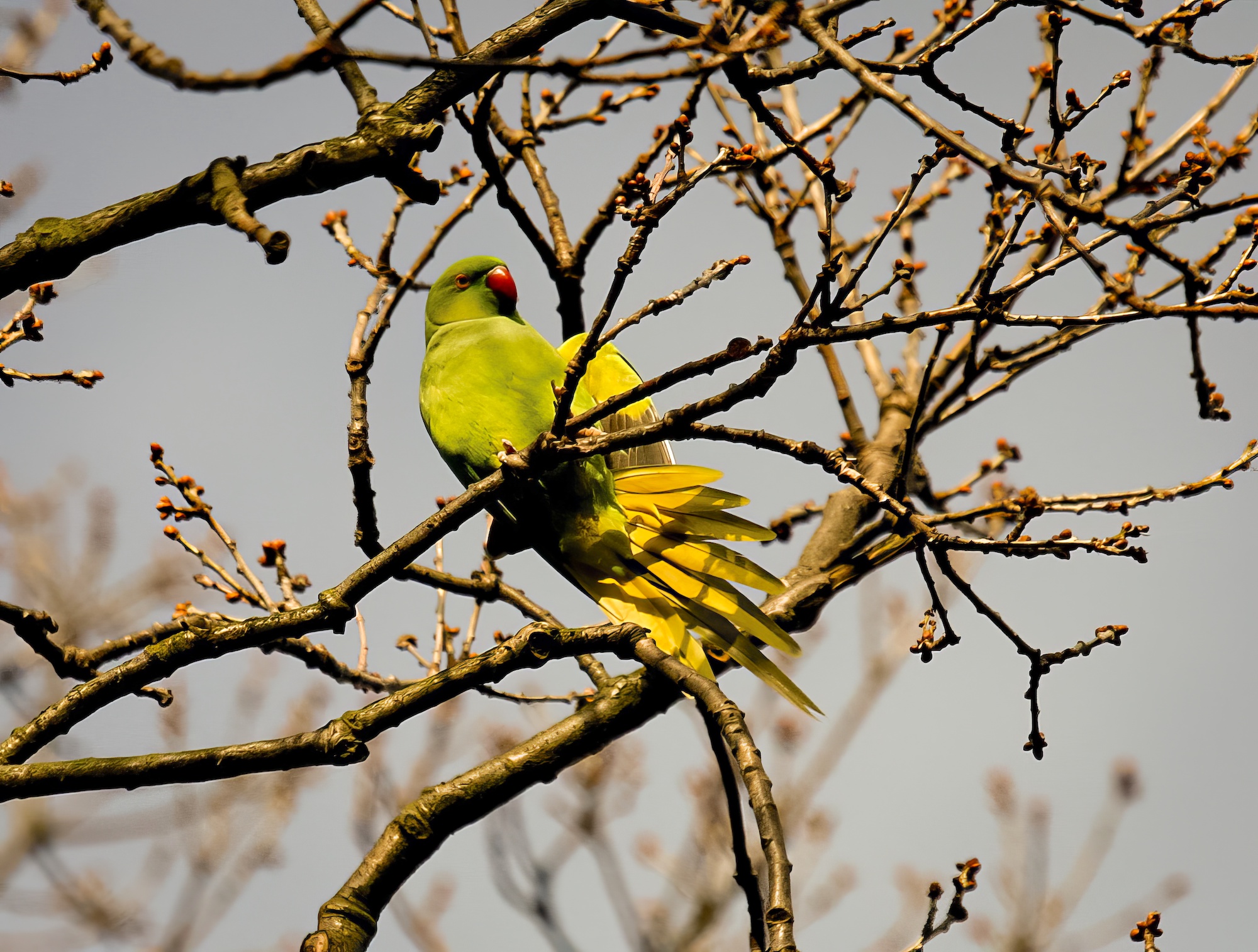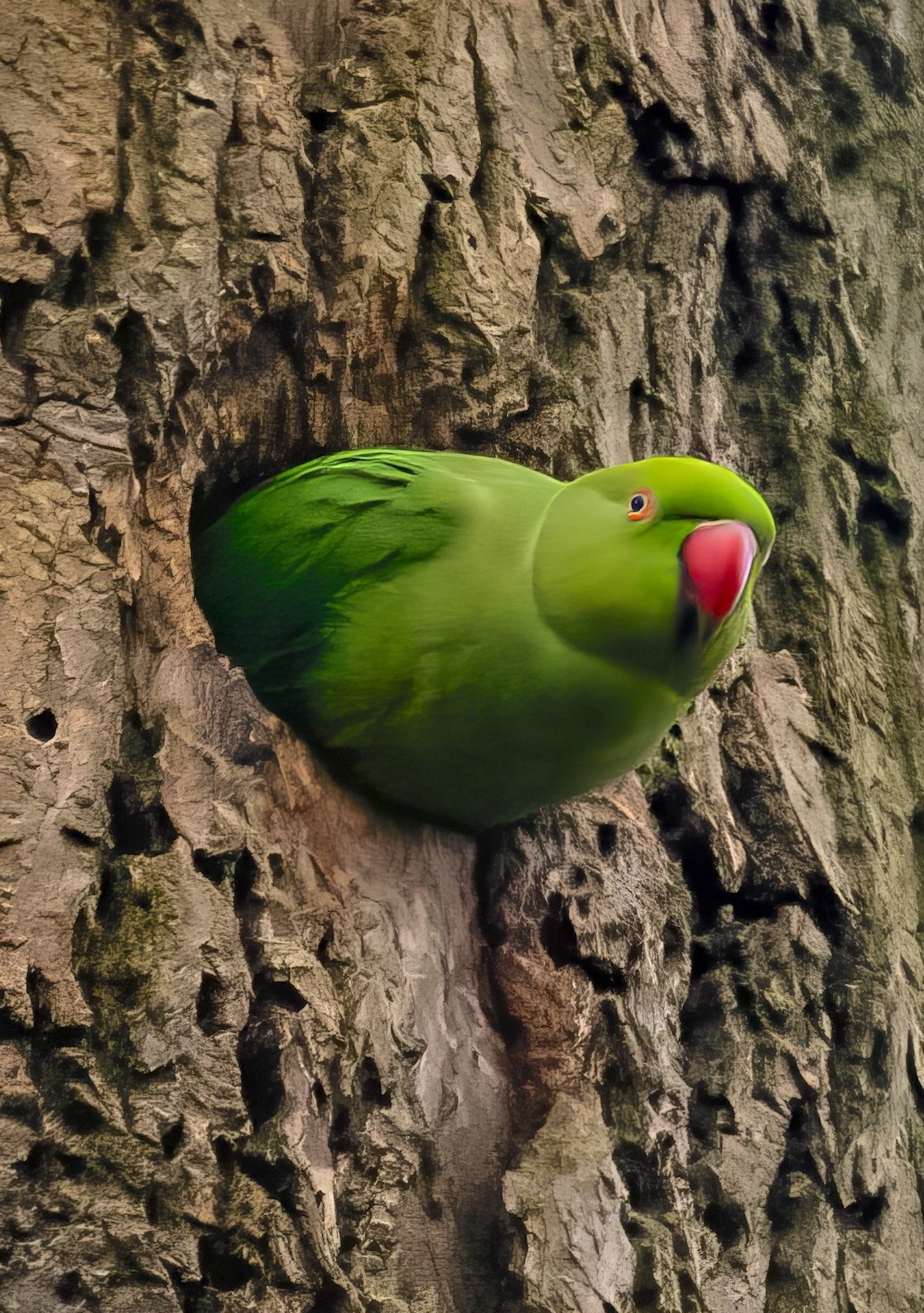Rose-ringed Parakeet Psittacula krameri


The rise and rise in the Rose-ringed Parakeet has been well covered in the literature though its occurrence in the county is still somewhat sporadic. The species is not mentioned in Smith and Cornwallis (1955) but Lorand and Atkin (1989) noted that there had been several records since 1966, mainly on the coast and in spring with single birds being seen at Gibraltar Point NNR in June 1976 and April 1982, for example. Since then sporadic reports have appeared in the LBR in the 1980s and 1990s, mostly in the ‘Escapes’ section, and during 2000-2019 only 2001 was a blank year. There has been a steady trickle of records from the Skegness area and the west side of The Wash including a flock of 20 at Gibraltar Point in October 2014. However, the picture is muddied by the presence of around 30 free-flying birds at the Lincolnshire Wildlife Park near Friskney. In 2013 a bird paired with another of unusual plumage colour was seen at a nest hole in Weelsby Wood, and recently it has emerged that they have bred in small numbers in the Bratoft area since 2015 or 2016. In 2021, a pair bred in that area using a nest-hole in an Ash tree Fraxinus excelsior. They have modestly increased in population each season, with up to 16 reported in winter. They visit local gardens to take food from bird-tables and feeders; they have also been seen feeding on fruit and various seeds and berries. Recently, and just outside the county, a small colony may be getting established on the west side of Peterborough, Cambridgeshire so their presence in Lincolnshire seems unlikely to diminish (I. Gordon, pers. comm.) The species status on the British List is Category C1, covering birds which, although introduced, now derive from the resulting self-sustaining populations.
(Account as per new Birds of Lincolnshire (2021), included October 2022)

